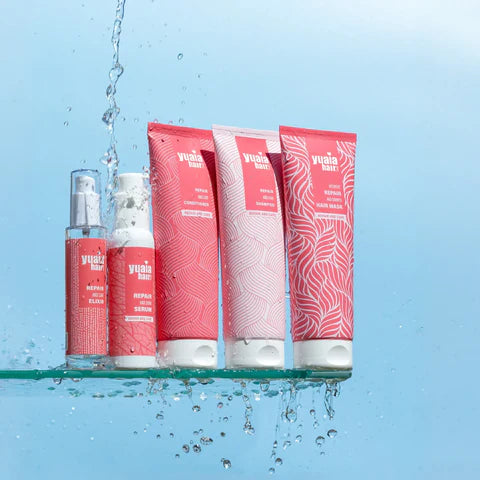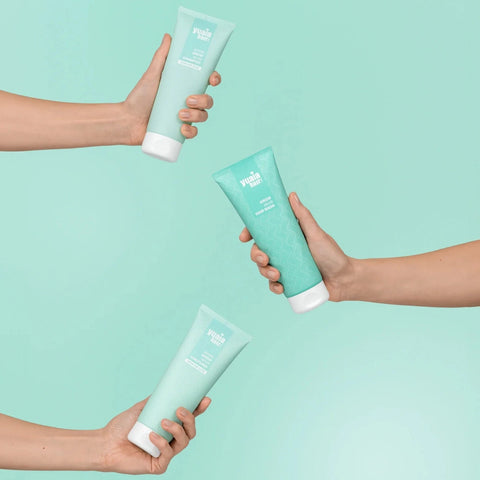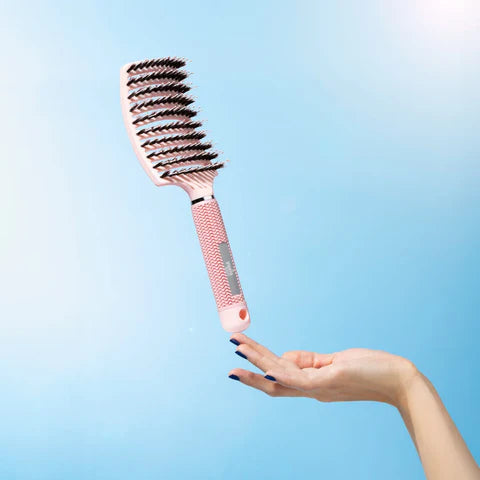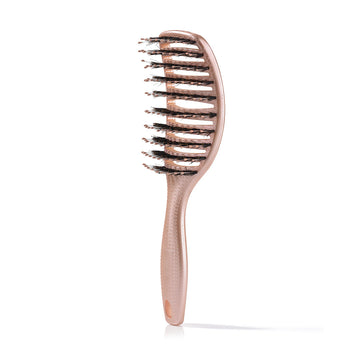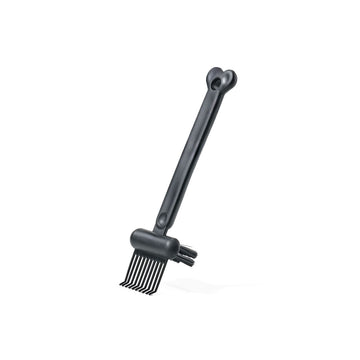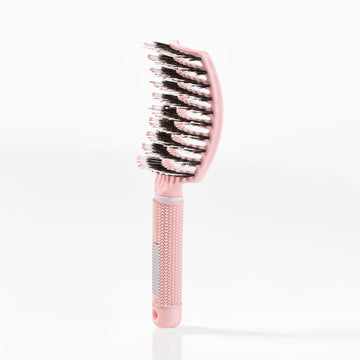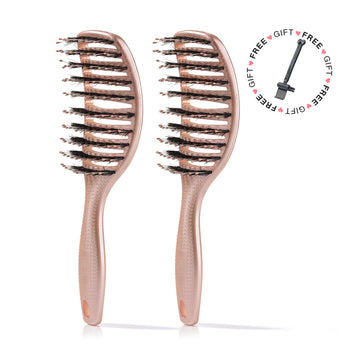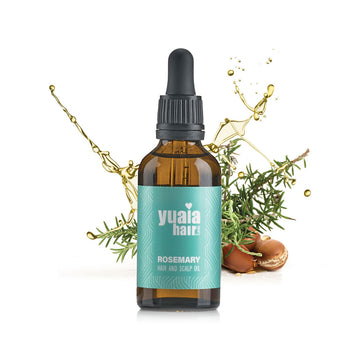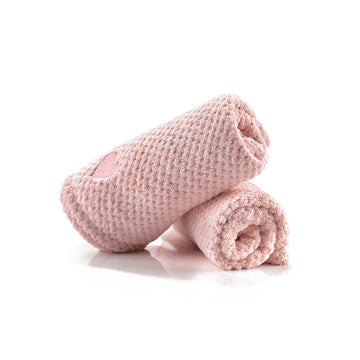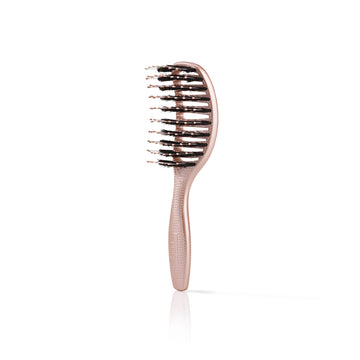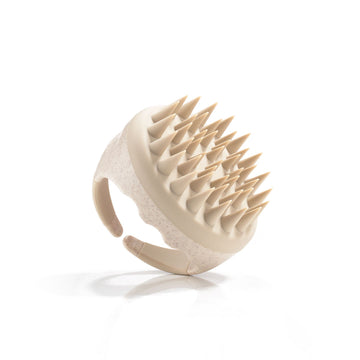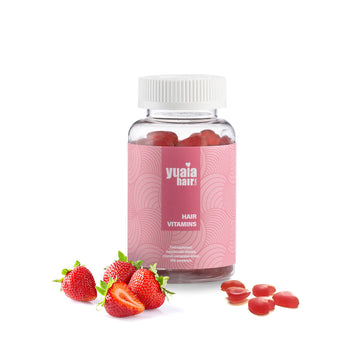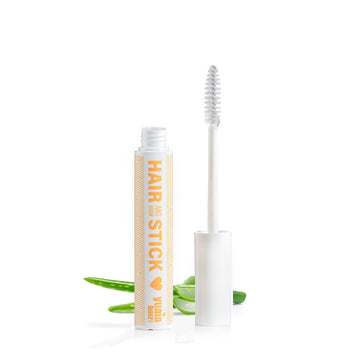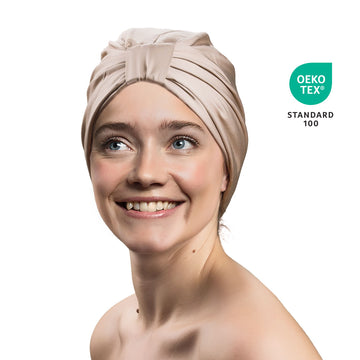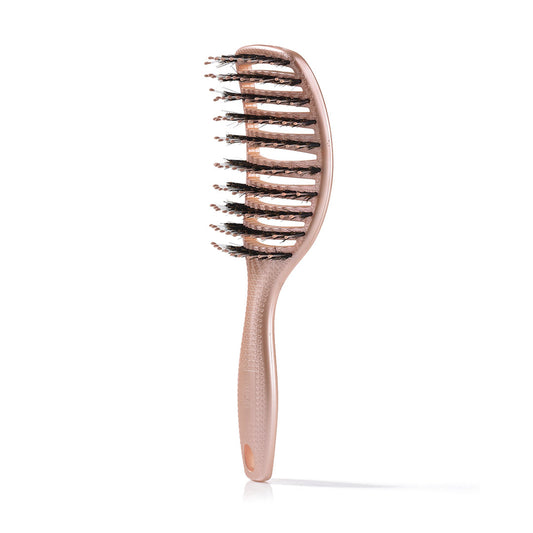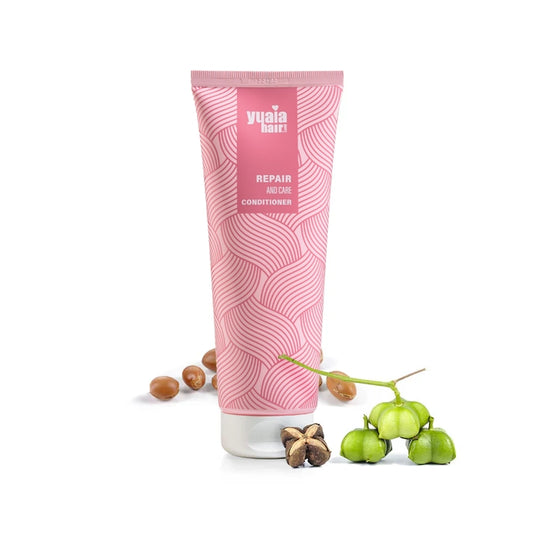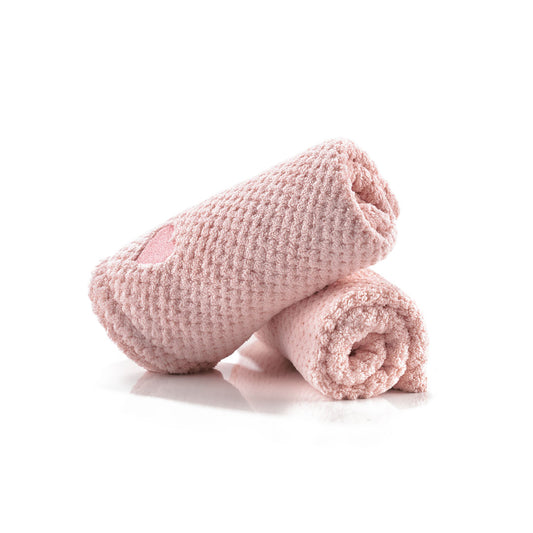
Is shea butter good for low porosity hair? Find out when it works best

by Nanna Bundgaard | 20. August 2025 | Reading time: 6 minutes
Read more about the authorIn the world of hair care, shea butter has long been celebrated for its natural moisturizing properties. Known for its rich, creamy texture and nourishing benefits, shea butter is a staple in many hair care routines. However, when it comes to low porosity hair, the use of shea butter sparks debate. With conflicting advice from experts and brands, many are left wondering whether shea butter is truly beneficial for low porosity hair.
What is low porosity hair?
Low porosity hair is characterized by its resistance to moisture absorption. The tightly bound cuticle layer makes it difficult for moisture and nutrients to penetrate, leading to dry and brittle hair. This type of hair is also prone to product buildup, as products tend to sit on the surface rather than being absorbed. Understanding the nature of low porosity hair is important for selecting the right hair care products and avoiding practices that could exacerbate its challenges.
The shea butter debate: Does it benefit low porosity hair?
The debate over shea butter's suitability for low porosity hair is marked by differing opinions. On one hand, proponents argue that the fatty acid profile of shea butter, which includes oleic and stearic acids, offers protective qualities that can benefit low porosity hair. These fatty acids can help create a barrier that locks in moisture, potentially helping to overcome the hair's natural resistance to moisture.
On the other hand, many experts caution against using shea butter for low porosity hair due to its heavy, occlusive nature. The thickness of shea butter can lead to buildup, making it difficult for moisture to penetrate the hair shaft. This is why it's often recommended more for high porosity hair, where its sealing properties can help retain moisture.
Despite these concerns, some users have found benefits in using shea butter for specific applications, such as styling or sealing. The key lies in how it's used—sparingly and in lightweight formulations—to avoid overwhelming the hair.
For those looking to incorporate shea butter into their routine, it's important to be mindful of its potential to cause buildup. Using shea butter in small amounts or in combination with heat can improve its absorption. Additionally, monitoring the hair for signs of buildup and adjusting usage accordingly can help maintain healthy, hydrated hair.
For an effective brushing routine that complements the use of shea butter, consider using our curvy brush to help distribute the product evenly and reduce the risk of buildup.
The shea butter debate: Does it benefit low porosity hair?
When it comes to low porosity hair, the debate over shea butter's effectiveness is multifaceted. On one side, advocates highlight shea butter's rich fatty acid profile, particularly oleic and stearic acids, which can create a protective barrier on the hair. This barrier might help lock in moisture, which is beneficial for low porosity hair that struggles with moisture absorption.
However, the other side of the debate points out the potential drawbacks. Shea butter is known for its thick and heavy nature, which can lead to product buildup on low porosity hair. This buildup can further hinder moisture absorption, exacerbating the very issue it aims to solve. As a result, many experts recommend shea butter more for high porosity hair, where its sealing properties can help retain moisture.
Despite these concerns, some individuals with low porosity hair have found success using shea butter in specific ways. For example, using it sparingly as a sealant after applying a water-based moisturizer can help lock in hydration without overwhelming the hair. It's also noted that applying shea butter in a whipped form or combining it with heat can improve its absorption, making it more suitable for low porosity hair.
Practical tips for using shea butter on low porosity hair
For those who wish to incorporate shea butter into their hair care routine, it's essential to do so thoughtfully to avoid buildup. Here are some practical tips:
- Use sparingly: Apply a small amount of shea butter, focusing on the ends of the hair where moisture retention is most needed.
- Whipped formulations: Consider using whipped shea butter, which is lighter and easier to spread, reducing the risk of buildup.
- Heat application: Use heat to aid in absorption. Applying shea butter to slightly damp hair and using a warm towel or heat cap can help it penetrate better.
- Monitor for buildup: Be vigilant for signs of buildup, such as dullness or extended drying time, and adjust usage accordingly.
To complement the use of shea butter, incorporating a rosemary hair oil can provide a lightweight alternative for regular moisturizing, helping to maintain a balance between hydration and product weight.
Ultimately, while shea butter can be beneficial for low porosity hair, its success largely depends on the application technique and the individual's unique hair characteristics. By using it judiciously and in combination with other lightweight products, you can enjoy the benefits of shea butter without compromising hair health.
Get a 10% discount code sent to you
Receive the best tips and tricks for your hair from Lotte and Nanna 🥰
Alternatives to shea butter for low porosity hair
While shea butter can be used with caution, there are several lighter alternatives that may better suit low porosity hair. Oils such as jojoba, grapeseed, and argan are excellent options due to their lightweight nature and ability to penetrate the hair shaft without causing buildup. These oils provide hydration and nourishment while allowing the hair to maintain its natural balance.
For daily use, it's important to choose water-based, lightweight products. These formulations help ensure that moisture can effectively reach the hair strands without being obstructed by heavy residues. Incorporating these alternatives into your routine can help maintain healthy, manageable hair.
When does shea butter work for low porosity hair?
While generally recommended for high porosity hair, shea butter can still be beneficial for low porosity hair in specific scenarios. It can be particularly useful for sealing moisture in protective styles or treating dry ends. These applications allow shea butter to act as a barrier, locking in hydration where it's most needed.
Using shea butter in small amounts, or micro-dosing, on well-hydrated hair can also be effective. This approach minimizes the risk of buildup while maximizing the protective benefits of shea butter. By applying it sparingly and focusing on areas prone to dryness, such as the ends, you can enjoy the benefits without overwhelming your hair.
Frequently asked questions
Can shea butter cause buildup on low porosity hair?
Yes, shea butter can cause buildup on low porosity hair due to its heavy, occlusive nature. To prevent this, use it sparingly and focus on applying it to well-hydrated hair. Regular clarifying routines can also help manage buildup.
Should low porosity hair avoid all butters?
Not necessarily. While heavy butters may not be ideal, the texture and amount used are important factors. Lightweight formulations or whipped versions of butters can be more suitable for low porosity hair.
How can I tell if shea butter is not working for my hair?
If you notice signs such as dullness, extended drying time, or a greasy feel, shea butter may not be working well for your hair. In such cases, consider adjusting the amount used or trying lighter alternatives and incorporating clarifying treatments into your routine.
Microfiber towel for hair
Super-absorbent microfibre shortens drying time and reduces frizz and breakage.€12,99 €26,50
Get a 10% discount code sent to you
Receive the best tips and tricks for your hair from Lotte and Nanna 🥰
 2-5 day delivery
2-5 day delivery
 25.000+ satisfied customers
25.000+ satisfied customers
 Satisfaction Guarantee
Satisfaction Guarantee



